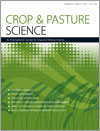CP11268 Re-evaluating the contribution of summer fallow rain to wheat yield in southern Australia
In southern Australian, rain that falls during summer prior to the establishment of winter crops has not traditionally been valued as a resource for crop production. The millennium drought and a predicted increase in the proportion of summer rain under future climate patterns have stimulated a re-evaluation of this notion. We used a crop production model to demonstrate that summer fallow rain contributes 1.0 t/ha or 33% of mean simulated wheat yield across southern Australia.




